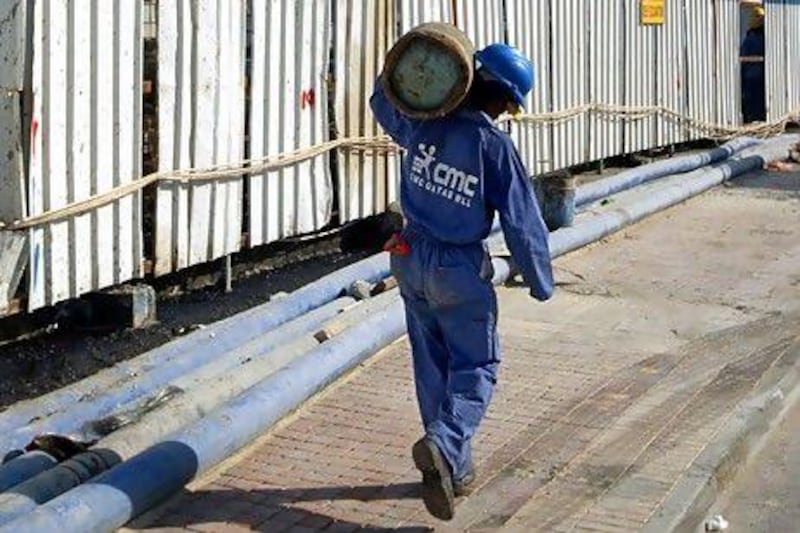DOHA // Flooded pitches may not yet be a worry for the organisers of the 2022 Fifa World Cup in Qatar, but a rising water table beneath Doha is troubling builders across the city.
Large blue hoses are rapidly appearing on streets around Qatar's capital. They are used to pump water from building sites and prevent basement excavations from flooding. As construction gathers pace, more of the distinctive hoses can be seen snaking around the city's streets.
"It is a problem associated with coastal towns around the Gulf, having the same geology and topography," said Kamal Omer, the operations manager at Asco Consulting Engineers in Doha, a firm that has been involved in various water studies in the city for more than three decades. "The problem is manageable, but it has got worse due to urbanisation."
The rapid population growth in the city combined with big gaps in the municipal sewerage system and a leaky mains network has meant water and effluent are accumulating in pockets beneath the capital.
The water table has reached less than 2 metres from the surface in some parts of the city.
That will prove to be a headache for engineers planning the vast Doha Metro project that is expected to go out to tender next month and is slated to include extended sections of tunnel beneath the city centre.
But millions of gallons of water will need to be removed from the ground first, and in such a way that avoids ground settlement that could undermine existing buildings.
Dealing with Doha's water problem is a key part of Qatar's five-year national development strategy, which runs to 2016.
As much as 35 per cent of the desalinated water in the city is lost through leakage, according to government estimates. The plan is to reduce this to 10 per cent over the next four years.
The country is spending some US$125 billion (Dh459.16bn) preparing for the Fifa World Cup and other large-scale projects, including a new airport, port and railway.
In the past, much of the water taken from construction sites was simply emptied on the land to be lost through evaporation or drainage to the sea, reducing the natural aquifers. The practice also increased the salinity of the land in coastal areas because of the intrusion of seawater.
Now many contractors instead retain the water pumped out of building sites and reinject it into the ground as construction progresses, according to Rolf Herrmann, the Middle East technical manager at Schlumberger Water Services. The process is known as recharge.
"It is a better approach. It reduces cost and time and it means the roads are not congested with tankers carrying water away from building sites," said Mr Herrmann.
Doha's construction boom and the influx of people into the city has meant that its wastewater infrastructure has struggled to keep pace, and today large parts of the city are not connected to the sewerage system.
"There are septic tanks in some areas not connected to the sewerage network, so you have people consuming water, but the wastewater is being discharged into the ground instead of going to a controlled collection point," said Mr Omer.





